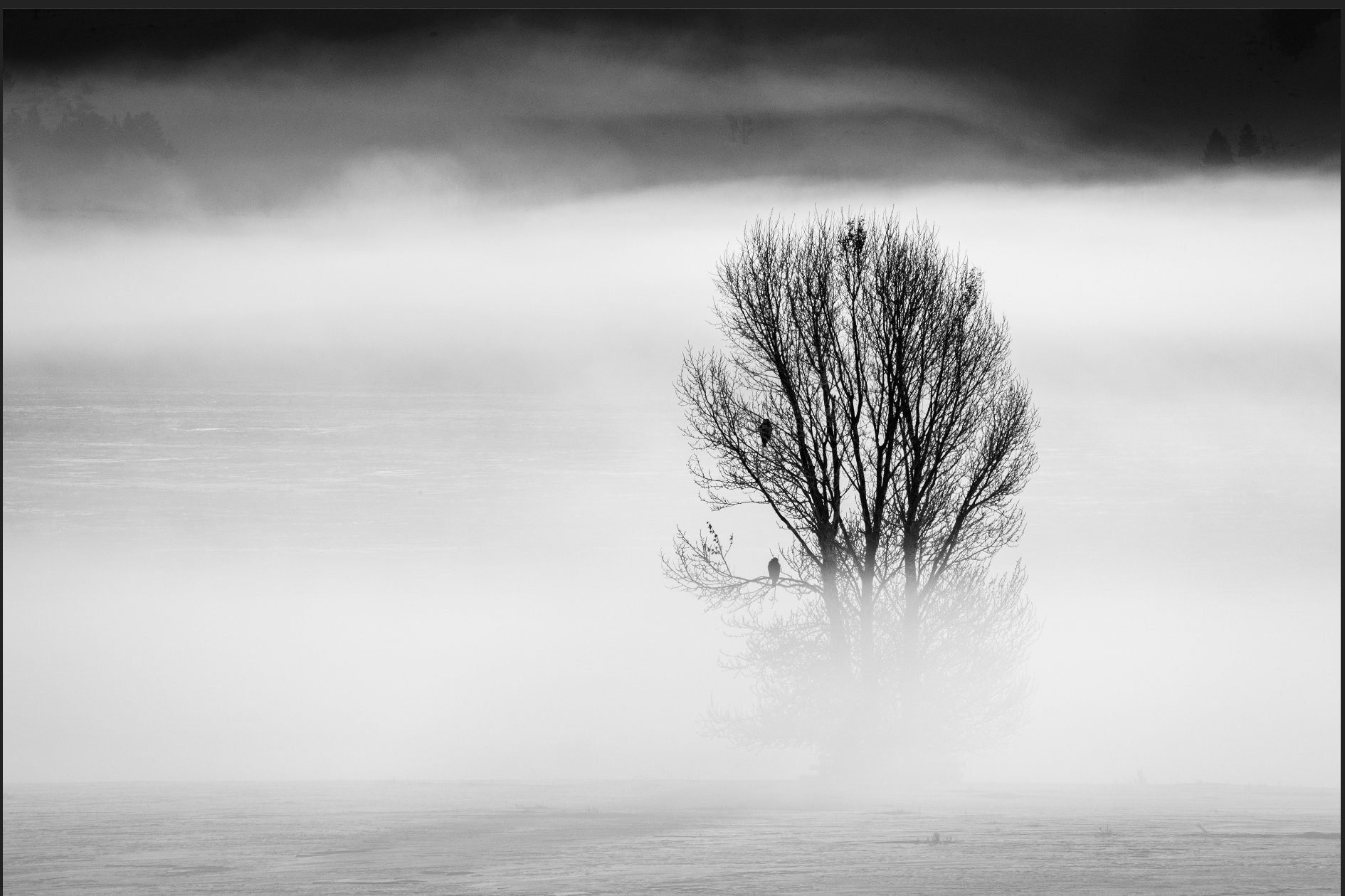BY MICHAEL BURGE /
Story and Photographs by Michael Burge
Story and Photographs by Michael Burge: Every travel destination has its surprises, and Grand Teton National Park was no different. We expected sawtooth peaks, sugar-crystal snow and bracing cold. After all, this was the middle of winter. What we didn’t expect were elk in their hundreds, maybe thousands. And a sleigh ride that took us completely around them as they rested in spring’s waiting room.
Grand Teton National Park is more accessible than Yellowstone, and even a little warmer, but winter shuts down many of the park’s roads. Temperatures hovered around 10 to 20 degrees Fahrenheit under a brilliant blue sky during our three-day stay, maybe breaking into the low 20s on one afternoon. That is perfect ski weather, but we weren’t there to ski. We were there to take in the Grand Tetons and see wildlife. The best way to do that is to take a tour.
The easiest access to the park is through Jackson, Wyoming. We booked an all-day tour with Jackson Hole Wildlife Safaris that emphasized wildlife, and were joined on this excursion by a skier who was sidelined by a torn knee ligament. Viewing wildlife is much less hazardous. All told there were four of us on the coach, including our guide/driver.
Our guide was well versed on the park’s history and where to find wildlife, so the tour was enjoyable and informative. We saw a wide array of animals, including bighorn sheep, mule deer, bald eagles, coyotes, and trumpeter swans. And we caught a glimpse of wolves and bison at an extreme distance.
Our tour’s highlight was a sleigh ride through the National Elk Refuge, a 25,000-acre preserve for about 8,000 of these magnificent beasts. Our sleigh was a big cart that held about a dozen passengers and was drawn by two horses. Our driver guided the sleigh around the elk, who relaxed in the snow waiting for winter to pass. As we circled, a clique of stags formed a line and marched in a procession in the direction of Grand Teton peak.
Jackson Hole is a valley bracketed by high peaks and this valley has served as a winter destination for elk for hundreds of years. Deep snow and fierce cold deprive the elk of food in their summer range in the high mountains, so they descend the heights in search of a more hospitable winter habitat. They still come to Jackson Hole despite a growing human population, and in 1912 the federal government established the sanctuary to protect elk and other species. Here the animals congregate until spring, when they leave the valley and follow the snow line back to their mountain homes. The National Fish and Wildlife Service manages the refuge and feeds the elk if there is not enough natural forage.
As we circled the herd we could see many elk were sporting full antler racks, but they wouldn’t for long, as March is the typical month for elk to shed. We were there in late February.
The antler shed is a big event for the town of Jackson. The elk scatter the antlers throughout the refuge, and local Boy Scout troops are invited into the refuge to collect them. In May the town of Jackson celebrates a multi-day Elk Fest, during which the antlers are auctioned off to bidders, with some of the proceeds going to support the National Elk Refuge. We visited the Town Square, where an arch constructed of elk antlers graces each corner. Each arch is supported by a steel frame and is composed of about 2,000 antlers.
After we left the refuge our guide drove off in search of other animals. He located a herd of bighorn sheep foraging in snow on a rather vertical rock wall. A group of five had broken away and stood on top of this precipice, and two of them decided to test their strength by bashing their heads together. Our snow coach could venture down roads other vehicles could not access, and we followed a stream through a white landscape. A bald eagle sat in a tree keeping watch over the stream, probably for fish. Ducks played in the water despite the freezing weather. We hoped for moose but never saw one.
On our last day there we drove to Jackson Lake and parked at Colter Bay. This is normally a summer playground, but the parking lot was covered in snow and most of the visitors were unloading skis and other winter gear. We did not know what to expect, and we hiked down a path cut through chest high snow to the lake and were astounded by what lay before us — a frozen, snow-covered expanse backed by the jagged peaks of the Grand Teton Range. The mountains stood like sentinels, with Grand Teton, the tallest, anchoring the southern point at 13,772 feet elevation. Mount Moran, directly across from where we stood, rose 6,000 straight up from the shore, to a height of 12,605 feet. It seemed to fill the sky.
Here it was bitingly cold, so cold my breath froze in my beard. But the brilliance of the day and the grandeur of the lake were too inviting to resist. We ventured onto the surface and were soon following tracks left in the snow left by skiers and snowmobilers. Farther out on the lake a family was pitching a tent, and soon they were boring through the ice with an auger. They weren’t the only group ice fishing on the lake.
As for us, we were just giddy with the pleasure of being there. There was just one thing to do: Make a snow angel right there in the middle of Jackson Lake.
